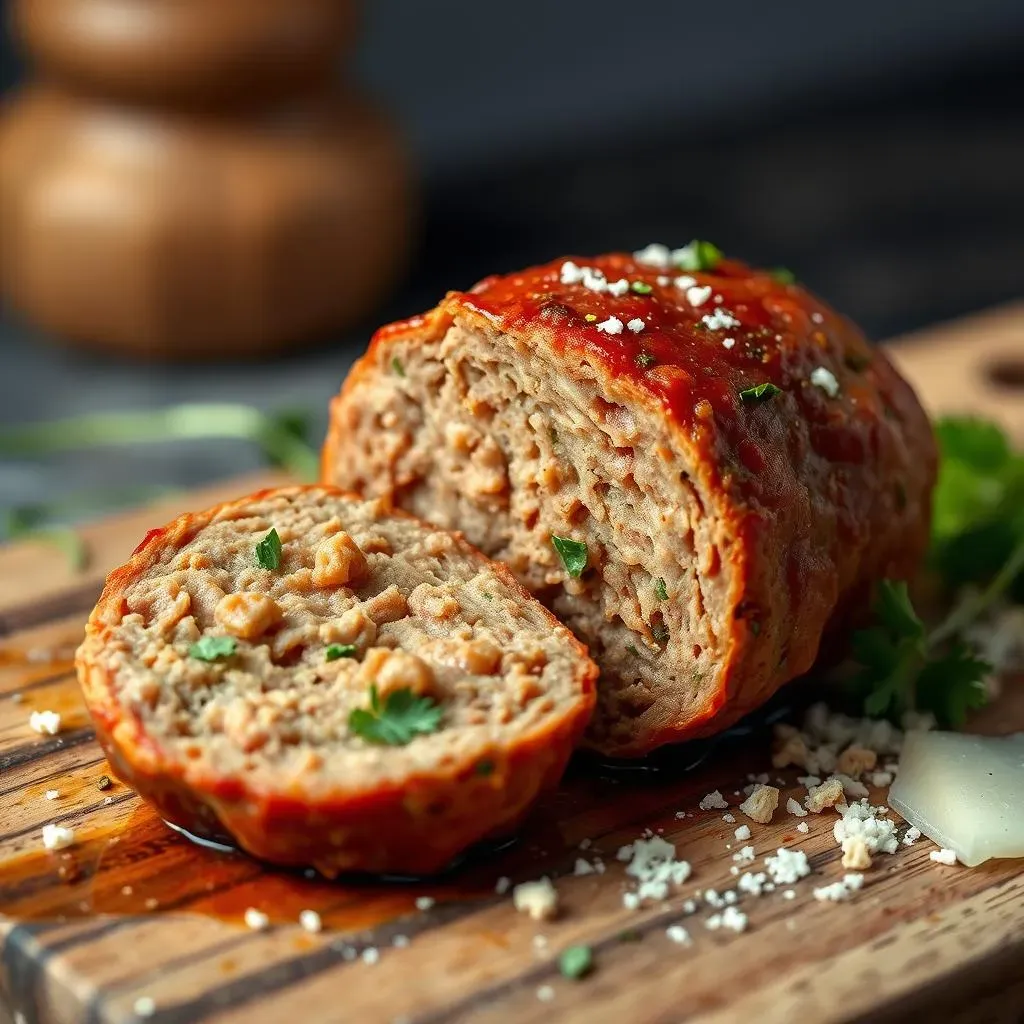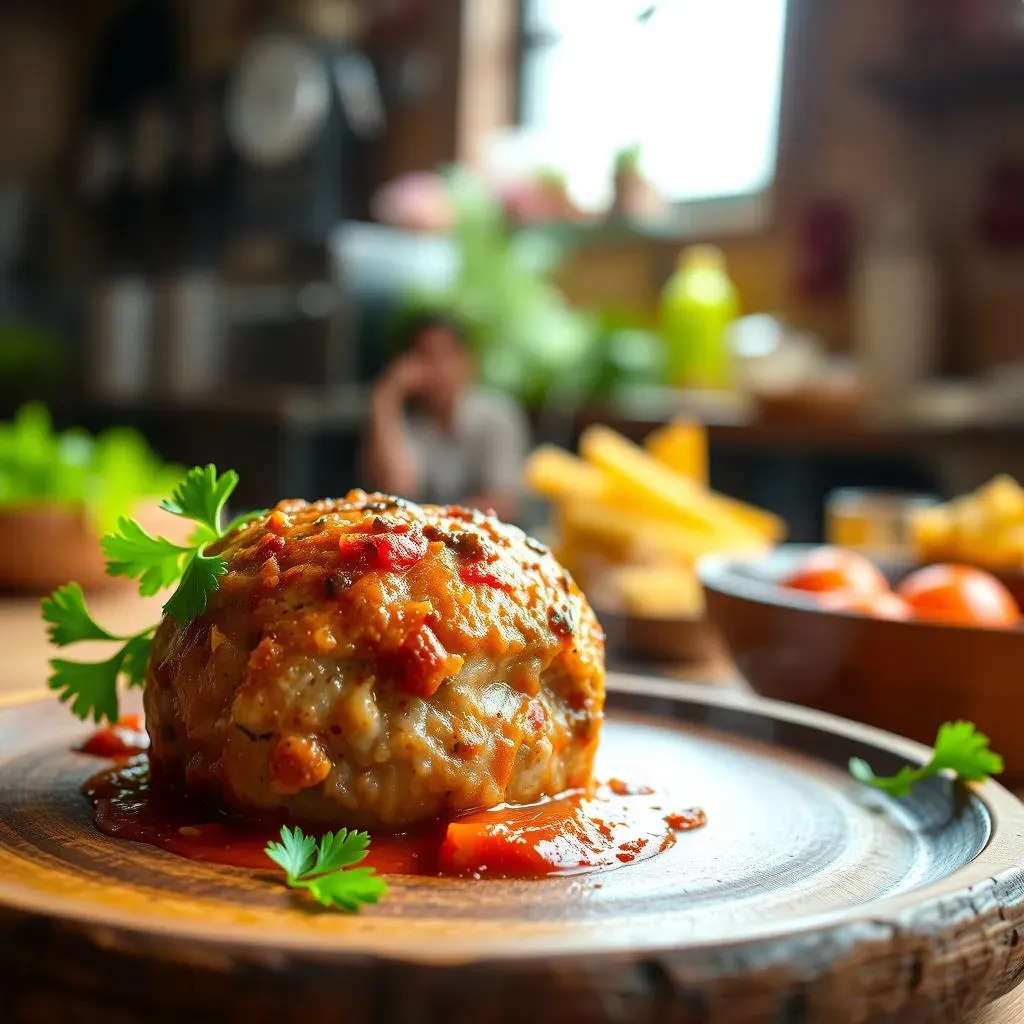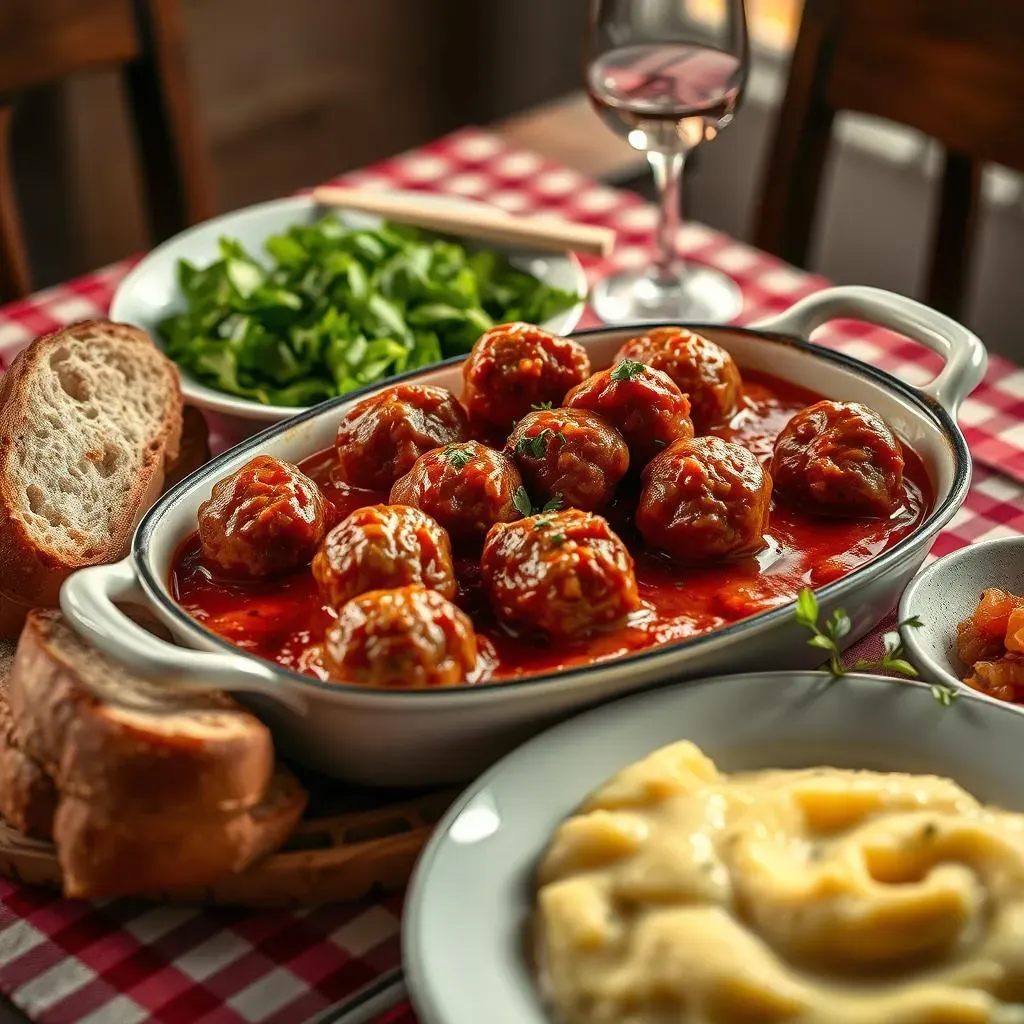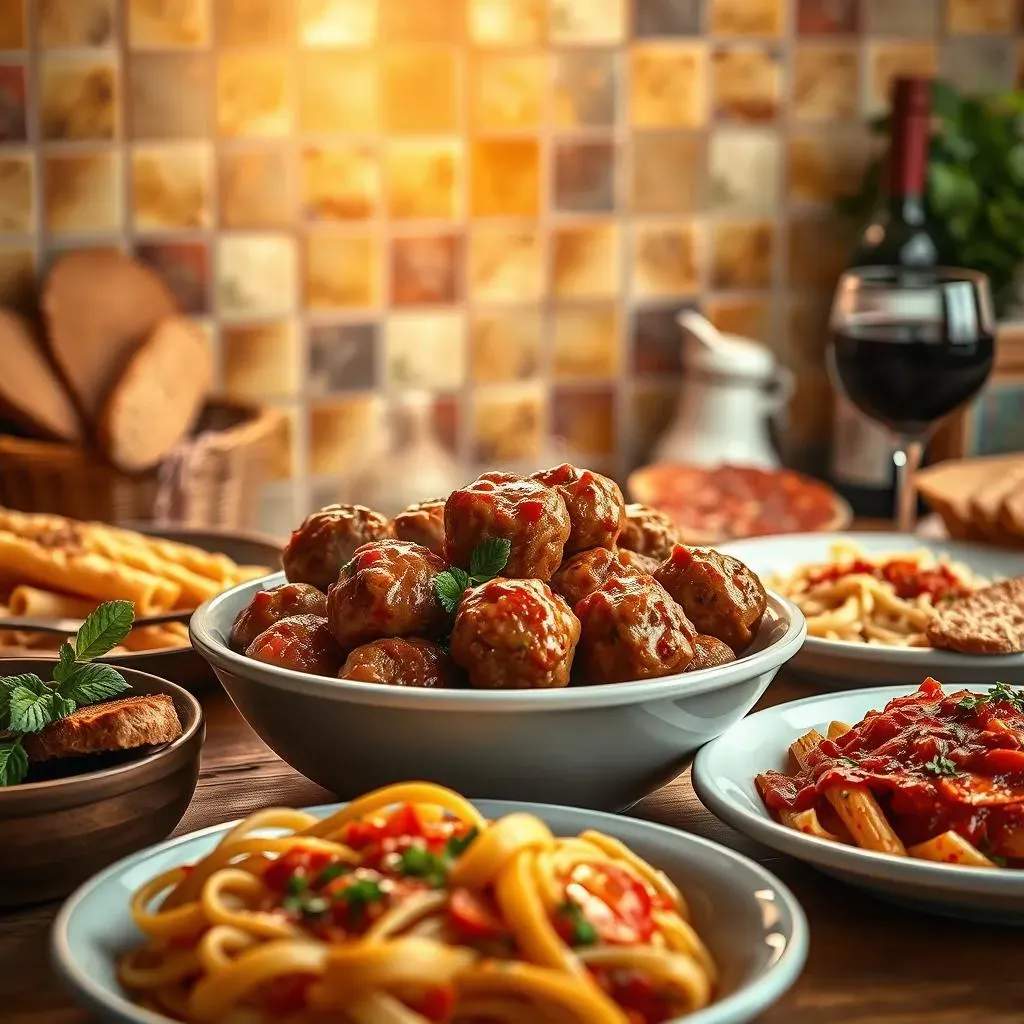Craving that melt-in-your-mouth, savory goodness of authentic Italian meatballs? You're not alone. Finding the best Italian meatballs recipes can feel like a never-ending quest, sifting through countless options that promise perfection but often fall short. Forget dry, bland meatballs that disappoint. We're diving deep into the secrets that separate the okay from the outstanding, the tough from the tender. This isn't just another recipe roundup; it's your comprehensive guide to mastering the art of meatball making.
Perfecting Your Italian Meatballs: Key Ingredients and Techniques

Perfecting Your Italian Meatballs: Key Ingredients and Techniques
The Right Meat Blend: Achieving Flavor and Texture Harmony
Let's talk meat. The foundation of any great meatball is, well, the meat! Ditch the single-note ground beef and embrace a blend. A mix of ground beef and pork is classic for a reason. The beef provides that familiar savory flavor, while the pork adds richness and keeps things moist. Some folks even sneak in a little ground veal for extra tenderness, but that's totally optional. The key is the fat content. You want about 80/20 (meat to fat) for optimal juiciness. Lean meat will result in dry, tough meatballs – a culinary crime we're trying to avoid!
Breadcrumbs and Binding Agents: The Secret to Tender Meatballs
Next up: binders! Breadcrumbs aren't just filler; they're essential for creating that soft, pillowy texture we crave. But not all breadcrumbs are created equal. Skip the pre-seasoned stuff and go for plain breadcrumbs, preferably Italian-style. The real trick, though, is to soak them in milk or broth before adding them to the meat mixture. This creates a panade, which helps to bind the ingredients and lock in moisture during cooking. Eggs are another crucial binder, adding richness and structure. Don't skimp on these elements – they're the unsung heroes of meatball perfection.
Flavor Boosters: Herbs, Spices, and the Importance of Freshness
Now for the fun part: flavor! This is where you can really put your personal stamp on your meatballs. Fresh herbs are a must. Parsley is a classic, but don't be afraid to experiment with oregano, basil, or even a little rosemary. Garlic is non-negotiable, of course, and a generous grating of Parmesan cheese adds a salty, umami punch. As for spices, Italian seasoning is a good starting point, but I like to add a pinch of red pepper flakes for a little heat. Remember, fresh is always best when it comes to herbs and spices. They'll add a vibrancy that dried versions just can't match.
From Grandma's Kitchen: Authentic Italian Meatballs Recipe Variations

From Grandma's Kitchen: Authentic Italian Meatballs Recipe Variations
so you've got the basics down. But what about those secret family recipes passed down through generations? Every Italian grandma has her own unique twist on meatballs, and that's where things get really interesting. Some add a touch of nutmeg for warmth, while others swear by a splash of red wine for depth of flavor. In some regions of Italy, you'll find meatballs studded with pine nuts and raisins, adding a sweet and nutty counterpoint to the savory meat. The possibilities are endless! Don't be afraid to experiment and create your own signature meatball recipe. Ask your family, research regional variations, and let your taste buds be your guide. After all, the best recipes are the ones that tell a story.
Variation | Key Ingredient | Flavor Profile |
|---|---|---|
Sicilian | Pine nuts and raisins | Sweet and Nutty |
Tuscan | Nutmeg | Warm and Aromatic |
Neapolitan | Red Wine | Rich and Savory |
Baking vs. Frying: Choosing the Right Method for Your Italian Meatballs

Baking vs. Frying: Choosing the Right Method for Your Italian Meatballs
Alright, let's settle the age-old debate: baking vs. frying your Italian meatballs. Honestly, there's no right or wrong answer here – it all comes down to personal preference and what you're looking for in your final product. Frying gives you that beautiful, crispy exterior and a rich, browned flavor. However, it can also be a bit messy and requires more attention to ensure even cooking. Baking, on the other hand, is a more hands-off approach. It's less messy, and you don't have to worry about constantly flipping the meatballs. The downside? You might not get that same level of crispiness. But fear not, there are tricks to achieving a golden-brown crust in the oven, which we'll get into.
Personally, I'm a big fan of baking for weeknight meals. It's just easier and less time-consuming. But for a special occasion, when I really want to impress, I'll often opt for a combination of both methods: a quick sear in the pan to develop that crust, followed by baking to ensure the meatballs are cooked through. This gives you the best of both worlds – that crispy exterior and a juicy, tender interior.
The Case for Frying: Sizzle and Flavor
Frying your meatballs is all about that Maillard reaction – the chemical process that occurs when amino acids and reducing sugars are heated, resulting in browning and complex flavors. When you fry meatballs, the high heat sears the outside, creating a delicious crust that's hard to resist. This method also tends to render out more fat, resulting in a richer, more savory flavor. However, frying can be tricky. You need to use enough oil to prevent the meatballs from sticking, but not so much that they become greasy. And you need to monitor the heat carefully to avoid burning the outside before the inside is cooked through. It's a bit of a balancing act, but the results are worth it.
- Pros: Crispy exterior, rich flavor, beautiful browning.
- Cons: Messy, requires more attention, can be greasy if not done properly.
The Case for Baking: Convenience and Health
Baking is a great option if you're looking for a healthier, more convenient way to cook your meatballs. By baking them in the oven, you avoid the added fat of frying and you don't have to stand over a hot stove constantly flipping them. Plus, baking is a more hands-off approach, freeing you up to focus on other tasks. To get that nice browning in the oven, try broiling the meatballs for the last few minutes of cooking, or toss them with a little olive oil before baking. And don't overcrowd the baking sheet – give the meatballs plenty of space to ensure even cooking.
Method | Pros | Cons |
|---|---|---|
Frying | Crispy, Rich Flavor | Messy, More Fat |
Baking | Convenient, Healthier | Less Crispy |
The Ultimate Italian Meatballs Recipe: Serving Suggestions and Pairings

The Ultimate Italian Meatballs Recipe: Serving Suggestions and Pairings
Classic Pairings: Pasta, Sauce, and More
you've got these amazing Italian meatballs, now what? The most obvious answer is, of course, pasta! But let's elevate this classic pairing. Forget jarred sauce – take the time to make your own. A simple tomato sauce, simmered with garlic, onions, and fresh basil, will do wonders. Or, for a richer flavor, try a slow-cooked ragu. As for the pasta, long strands like spaghetti or linguine are always a good choice, but don't be afraid to experiment with shapes like penne or rigatoni. And of course, don't forget the cheese! A generous grating of Parmesan or Pecorino Romano is the perfect finishing touch.
But meatballs aren't just for pasta. They're also delicious served on crusty bread as a meatball sub, or as an appetizer with a side of marinara sauce for dipping. You can even add them to soups and stews for a hearty, flavorful meal.
Beyond the Basics: Creative Serving Ideas
Want to think outside the pasta box? Let's get creative! How about meatball skewers with grilled vegetables? Or mini meatball sliders on Hawaiian rolls? You could even use them as a topping for pizza or polenta. And for a truly decadent treat, try stuffing them into baked potatoes with cheese and sour cream. The possibilities are endless!
When it comes to side dishes, consider the flavors of your meatballs and sauce. A simple green salad with a vinaigrette dressing is a refreshing counterpoint to the richness of the meatballs. Roasted vegetables, like broccoli or Brussels sprouts, are another great option. And for a truly Italian-inspired meal, serve your meatballs with a side of creamy polenta or risotto.
Serving Suggestion | Description |
|---|---|
Meatball Skewers | Grilled meatballs with peppers and onions |
Mini Meatball Sliders | Meatballs on Hawaiian rolls with provolone |
Meatball Pizza | Meatballs as a pizza topping |
Storing and Freezing: Keeping Your Best Italian Meatballs Fresh

Storing and Freezing: Keeping Your Best Italian Meatballs Fresh
Refrigerating Like a Pro: Short-Term Storage Tips
so you've made a batch of the best Italian meatballs ever, but you have leftovers (if you can resist eating them all!). Don't let them go to waste! Properly refrigerating your meatballs is key for short-term storage. First, let them cool down completely. I know, it's tempting to just toss them in the fridge while they're still steaming, but that can create condensation, which leads to soggy meatballs. Once they're cool, store them in an airtight container. If you have a lot of meatballs, layer them with parchment paper to prevent them from sticking together. They'll keep in the fridge for up to four days, ready to be reheated and enjoyed.
Freezing for Future Feasts: Long-Term Preservation
Want to enjoy your amazing meatballs weeks or even months from now? Freezing is your best friend. You have two options here: freezing them cooked or uncooked. For cooked meatballs, follow the same cooling process as with refrigerating. Then, arrange them in a single layer on a baking sheet and freeze them for about an hour. This prevents them from clumping together in the freezer. Once they're frozen solid, transfer them to a freezer bag or airtight container. For uncooked meatballs, follow the same freezing process. They'll keep in the freezer for up to three months.
Thawing and Reheating: Restoring Flavor and Texture
So, you're ready to unleash your frozen meatball stash. The best way to thaw them is in the refrigerator overnight. This ensures they thaw evenly and prevents bacterial growth. If you're short on time, you can thaw them in the microwave, but be careful not to overcook them. As for reheating, you have several options. You can simmer them in your favorite tomato sauce, bake them in the oven, or even pan-fry them for a crispy finish. Just be sure to heat them thoroughly before serving.
Storage Method | Time Frame | Tips |
|---|---|---|
Refrigerating | Up to 4 days | Cool completely before storing in an airtight container. |
Freezing (Cooked) | Up to 3 months | Freeze in a single layer before transferring to a freezer bag. |
Freezing (Uncooked) | Up to 3 months | Freeze in a single layer before transferring to a freezer bag. |
Your Italian Meatball Journey: From Kitchen to Table
So, there you have it – your roadmap to creating truly exceptional Italian meatballs. From selecting the finest ingredients and mastering essential techniques to exploring regional variations and perfecting your serving presentation, you're now equipped to impress family and friends with your meatball prowess. Remember, the best Italian meatballs recipes are more than just a list of ingredients; they're a story, a tradition, and a testament to the power of simple, honest cooking. Now, go forth, experiment, and create meatballs that are not only delicious but also a reflection of your own culinary passion. Buon appetito!